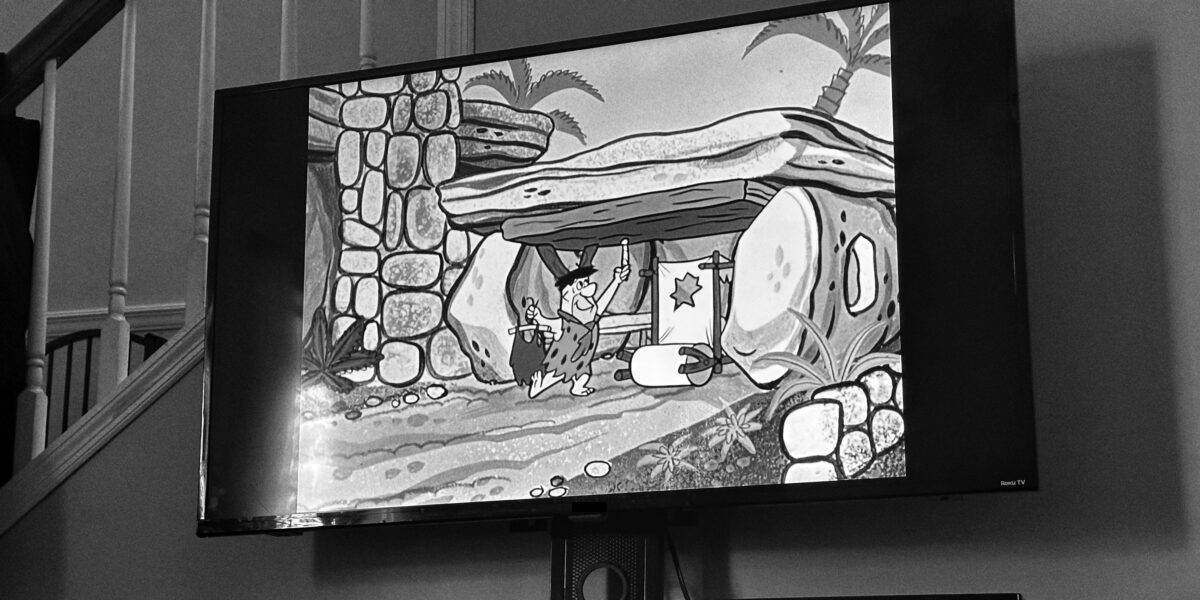It’s safe to say that, for the most part, modern cartoons are a far cry from the early days of animation. Animation’s roots are in the late 19th century, with cartoons hitting the screen in the early 20th century. Although they may seem relatively simple, these old cartoons were responsible for pioneering techniques that would help progress the art form as we know it, and influence generations of animators that would come after. Come with us on a journey through the oldest cartoons ever made, and see how many you’re familiar with. And if you want another dose of nostalgia, check out our sum-ups of the oldest TV stations and Disney movies!
Oldest Cartoons in Chronological Order
#13 – Fantasmagorie (1908)

Fantasmagorie is thought of by most to be the first cartoon ever created, by French animator Émile Cohl. Understandably, it’s a very short cartoon, with a runtime of under two minutes, and shows a simple example of hand-drawn animation. The film centers around a stick man, who moves around and transforms into various objects, including a flower and an elephant. Fantasmagorie laid the groundwork for animation to be artistic and creative.
#12 – Little Nemo (1911)
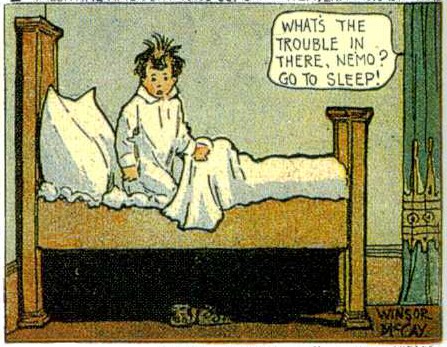
Little Nemo, or Little Nemo in Slumberland, is both the first animated film by animator Winsor McCay and one of the oldest examples of drawn animation. Considering that Nemo is over a century old, it’s particularly impressive how much it resembles modern cartoons. Funnily enough, a large part of the film depicts McCay betting his co-workers he can make thousands of drawings move. But the rest dives into the surreal landscapes of Nemo’s dreams. The cartoon was highly praised, motivating McCay to color each frame by hand after the initial premiere.
#11 – How a Mosquito Operates (1912)

This was the second film that Winsor McCay produced, capitalizing on the success of his first. Since Little Nemo, McCay had significantly improved his skills. He invested more time and energy into creating a story with a more developed character. This film is one of the earliest examples of line drawing animation. This is one of the aspects that makes it a technically superior cartoon to others of the time. How a Mosquito Operates is also notable for forgoing the use of intertitles, which were commonly used in silent films.
#10 – Gertie the Dinosaur (1914)
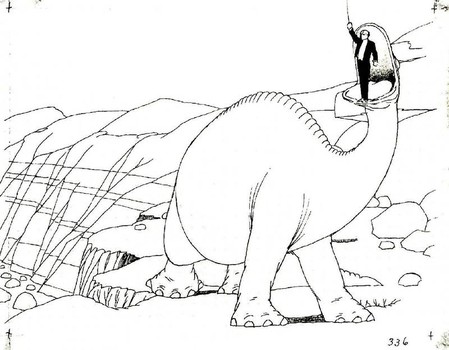
Gertie the Dinosaur is considered to be the most popular creation of Winsor McCay. It’s a relatively long film for this time, running for over 12 minutes. Gertie is a great example of animation techniques like keyframe animation, tracing paper, and loops, mixed with live action. The cartoon helped to showcase how animation could be used to explore a narrative and would influence animators of the future, including Disney. Due to its impact, there’s even a copy of Gertie in the U.S. Library of Congress.
#9 – Feline Follies (1919)
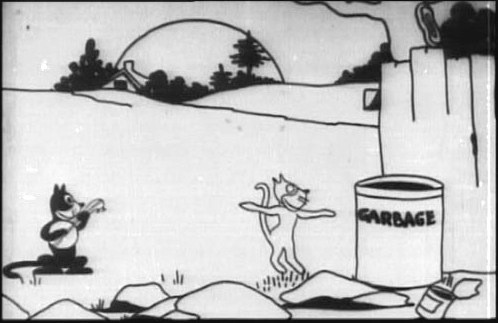
This cartoon was the first to introduce Felix the Cat, who would go on to be one of the most recognizable characters of this era. Felix found himself in many amusing situations, and his mischievous personality was a hit. Although cartoonist Pat Sullivan is generally credited with creating Felix, this has been disputed by Otto Messmer, the animator who worked for him. Either way, Felix was an enduring success in the early history of animation.
#8 – Alice’s Wonderland (1923)
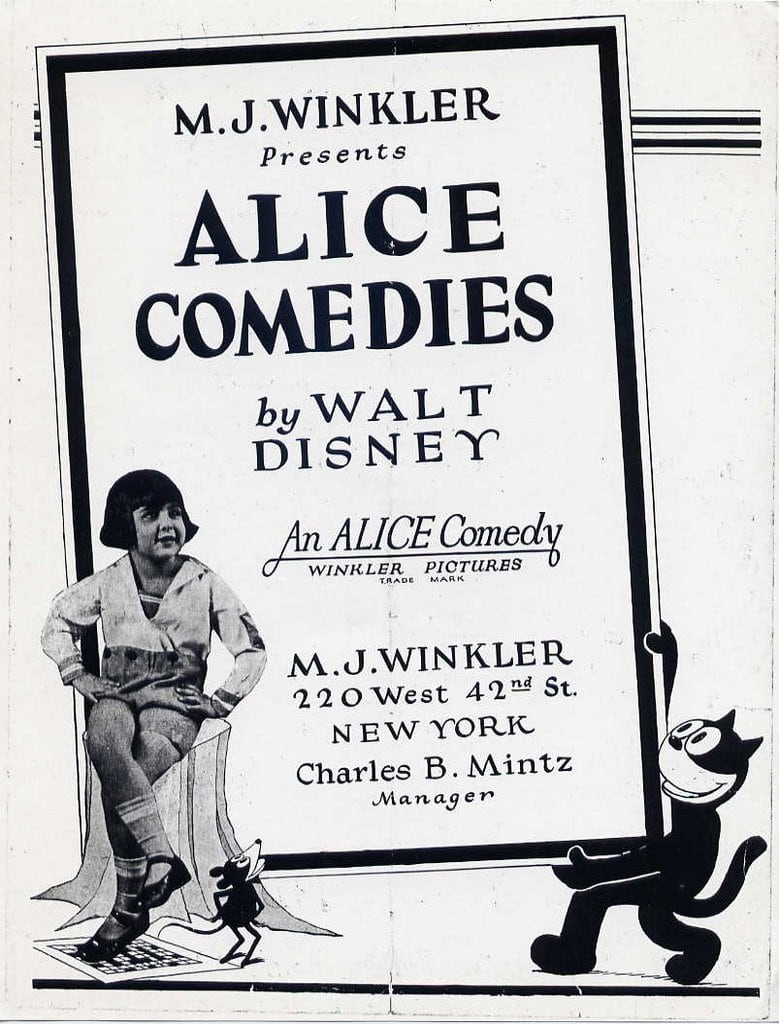
There’s a good chance when you read this title, you’ll instantly think of Alice in Wonderland. However, Alice’s Wonderland isn’t the same thing. This cartoon isn’t exactly based on Lewis Carroll’s novel, but uses the character of Alice to showcase a mixture of animation and live action. It would be the inspiration for Disney’s Alice Comedies series, and although it was never distributed in theaters, it displays experimental techniques that were innovative for the time.
#7 – The Adventures of Prince Achmed (1926)
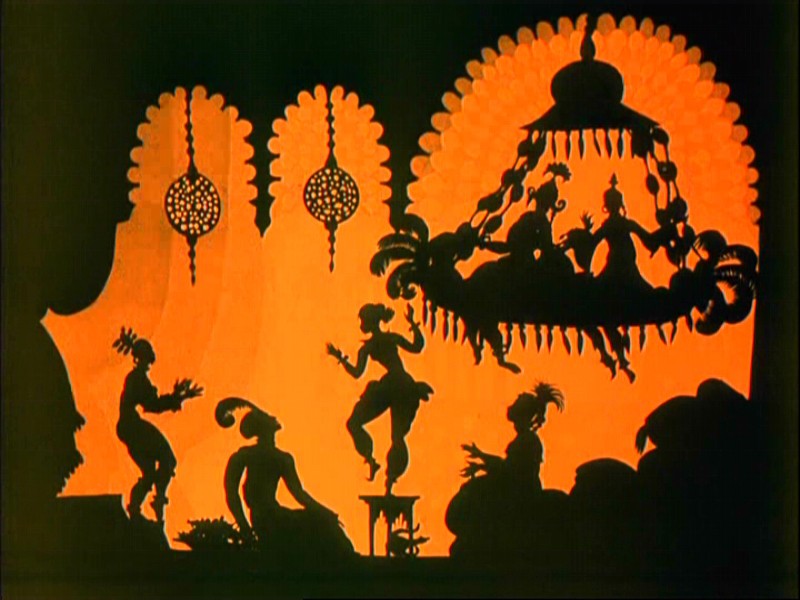
©Lotte Reiniger / Primrose Productions / CC BY-SA 4.0 - Original / License
This silent animation is based on a Middle Eastern folktale and uses an animation technique developed by Lotte Reiniger to retell the story creatively. Prince Achmed finds himself in a mythical world, and through the use of silhouette animation, this film gives us a spin on a classic tale. Although seemingly simple by today’s standards, Prince Achmed was nevertheless a groundbreaking milestone for animation.
#6 – Trolley Troubles (1927)
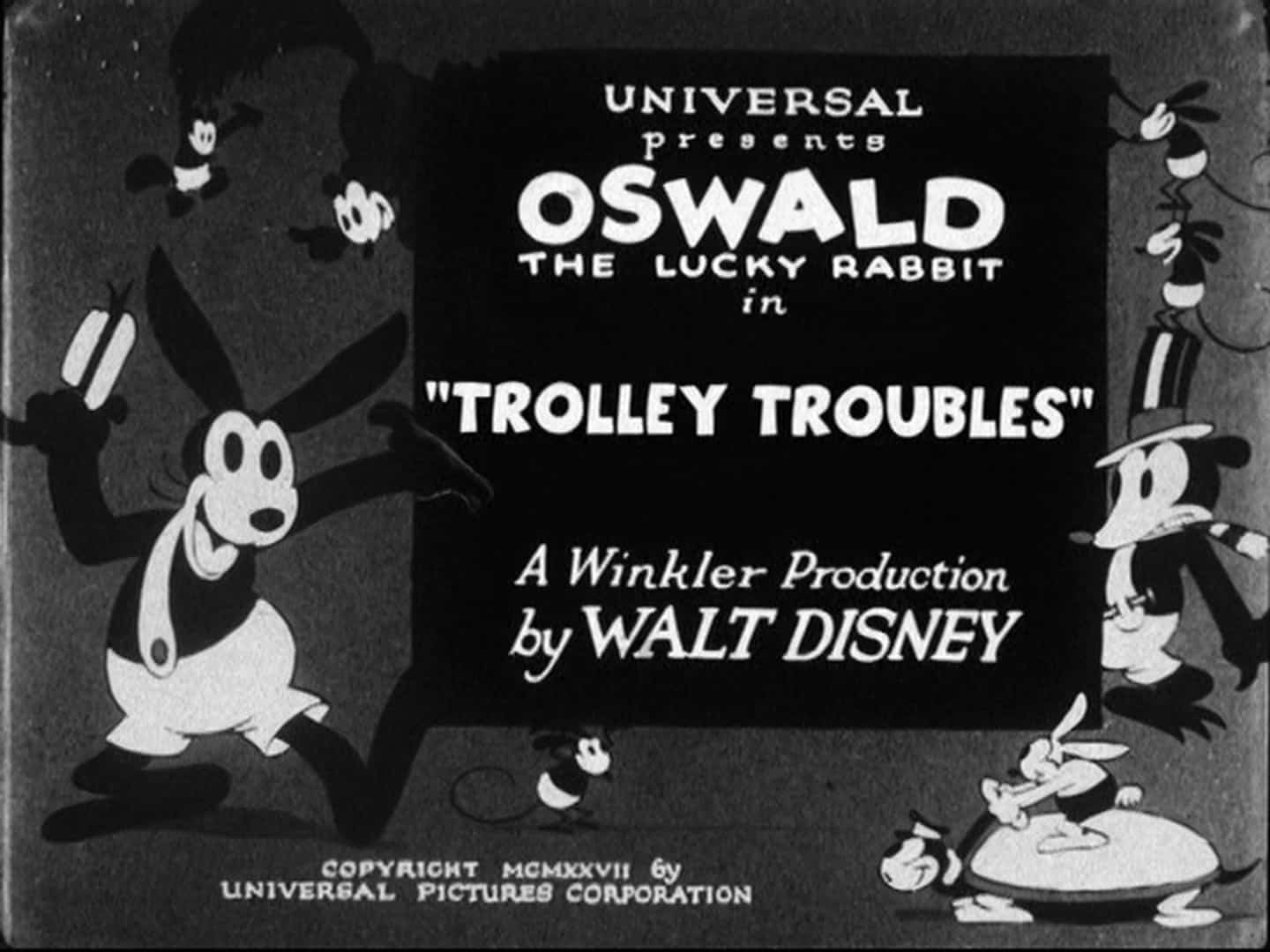
Trolley Troubles is a short silent film created by Disney, introducing a lesser-known character, Oswald the Lucky Rabbit. This creative adventure centering on Oswald trying to operate a trolley car set a precedent for Disney and would influence productions that came after. Although Oswald came before Mickey Mouse, he helped to pave the way.
#5 – Dinner Time (1928)

Dinner Time, created by Paul Terry, is part of his Aesop’s Film Fables series, and stars Farmer Al Falfa, one of his most iconic characters. Feeding a dog seems simple enough, but this premise leads to a lot of mischief and hilarity. Dinner Time premiered only a month before Steamboat Willie, and would unfortunately fall far behind in terms of popularity. However, in the history of animation, Dinner Time still stands as an earlier example of a synchronized sound cartoon and helped mark the end of the silent era.
#4 – Steamboat Willie (1928)

Like many early cartoons, Steamboat Willie was significantly shorter than modern shows, running for only seven minutes. However, this was long enough for Mickey Mouse to make an impression with his debut. Set on a steamboat, as the name suggests, Mickey stars as a deckhand with a cheeky attitude. As one of the first cartoons released with sound, Steamboat Willie helped catapult Mickey into stardom. As such, it’s a hallmark in the animation industry and marks the beginning of a very successful era for Disney.
#3 – Silly Symphonies (1929)
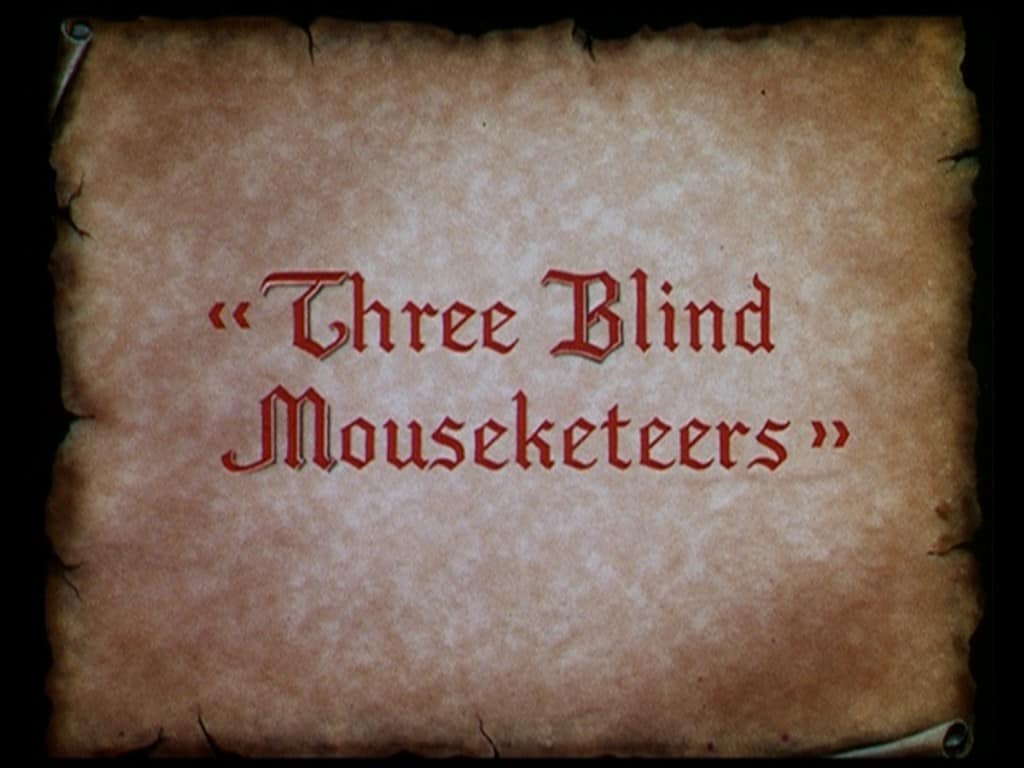
Disney produced the Silly Symphonies series between 1929 and 1939. In contrast to Mickey Mouse, Silly Symphonies focused on music and sound instead of characterization. Every short includes original compositions to accompany the lively animation, and usually different characters, in a sort of anthology style. Silly Symphonies pioneered several innovative techniques, including the multiplane camera as well as Technicolor.
#2 – Looney Tunes (1930)
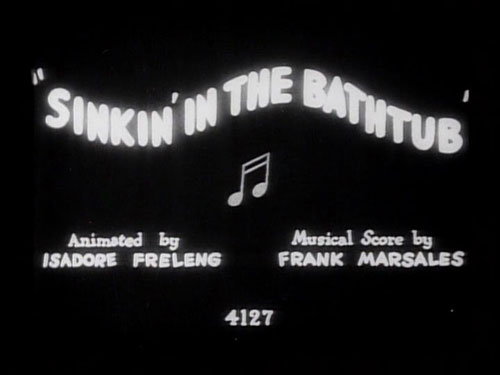
©Hugh Harman und Rudolf Ising / Public domain - Original / License
Following the success of Mickey Mouse, lightning struck again when Disney introduced the Looney Tunes in 1930, with the first short “Sinkin’ in the Bathtub.” Many Looney Tunes characters would go on to become iconic in their own right, such as Bugs Bunny and Daffy Duck. The whimsical humor and character development of Looney Tunes would endure much longer than the original cartoon shorts. The series would evolve into an entire franchise, incorporating TV shows, films, books, and music albums.
#1 – Betty Boop (1930)
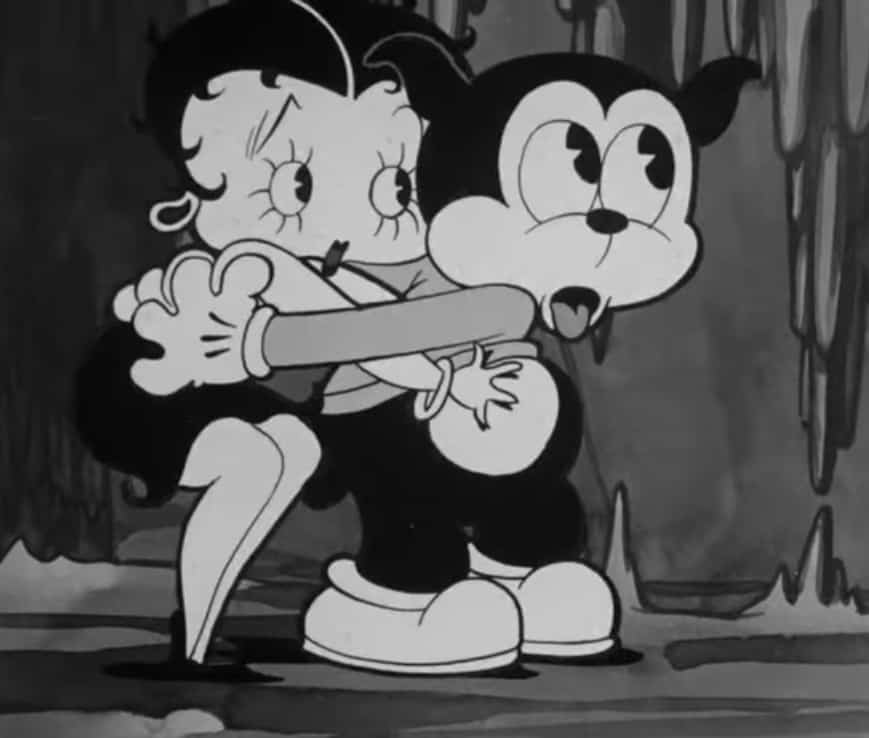
Betty Boop was originally a supporting character. But she quickly became a mainstay in early cartoons thanks to her personality, catchphrase, and striking caricature of the flapper subculture. Although many fans were enthralled with Betty, her original characterization was deemed not friendly to kids and unsuitably sexual. Her success declined after she was reconceived as a wiser, more demure, and less flirtatious character. However, her appeal lasts to this day.
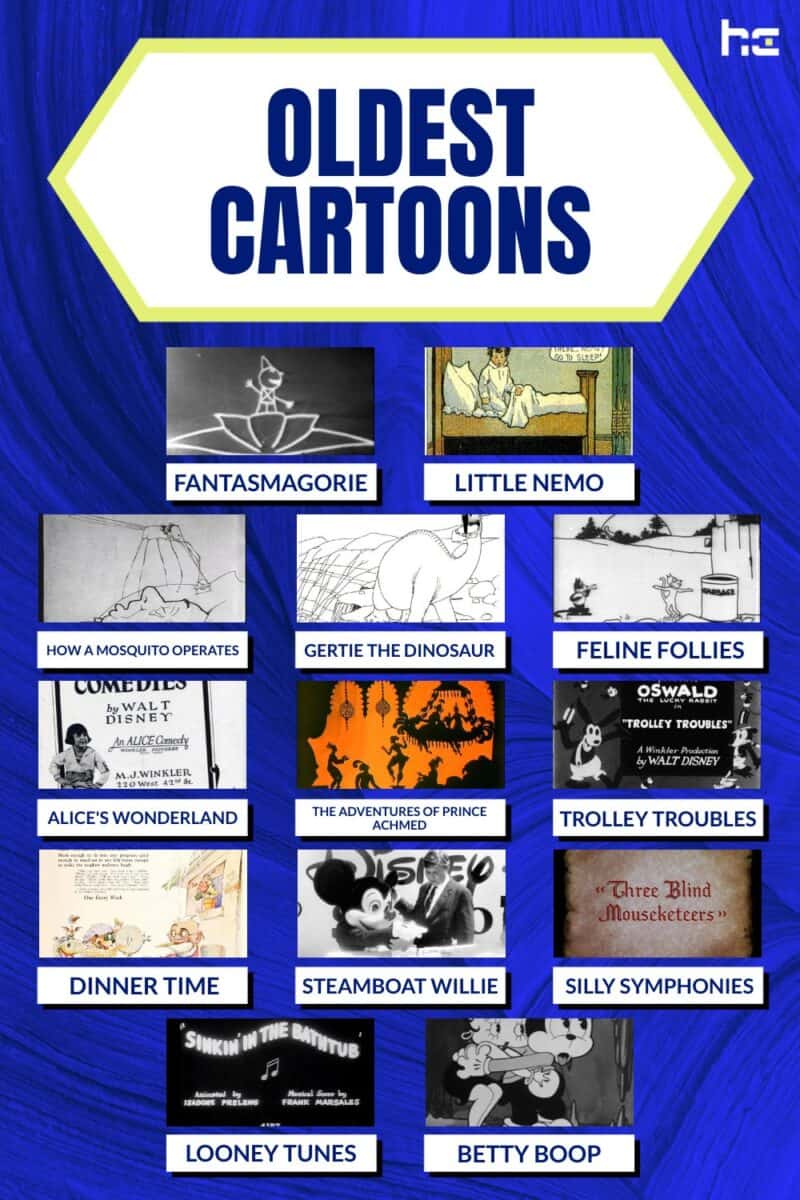
Summary of the Oldest Cartoons
| Rank | Cartoon | Year of Release |
|---|---|---|
| 13 | Fantasmagorie | 1908 |
| 12 | Little Nemo | 1911 |
| 11 | How a Mosquito Operates | 1912 |
| 10 | Gertie the Dinosaur | 1914 |
| 9 | Feline Follies | 1919 |
| 8 | Alice’s Wonderland | 1923 |
| 7 | The Adventures of Prince Achmed | 1926 |
| 6 | Trolley Troubles | 1927 |
| 5 | Dinner Time | 1928 |
| 4 | Steamboat Willie | 1928 |
| 3 | Silly Symphonies | 1929 |
| 2 | Looney Tunes | 1930 |
| 1 | Betty Boop | 1930 |
The image featured at the top of this post is ©History-Computer.com/Cassandra McBride.
